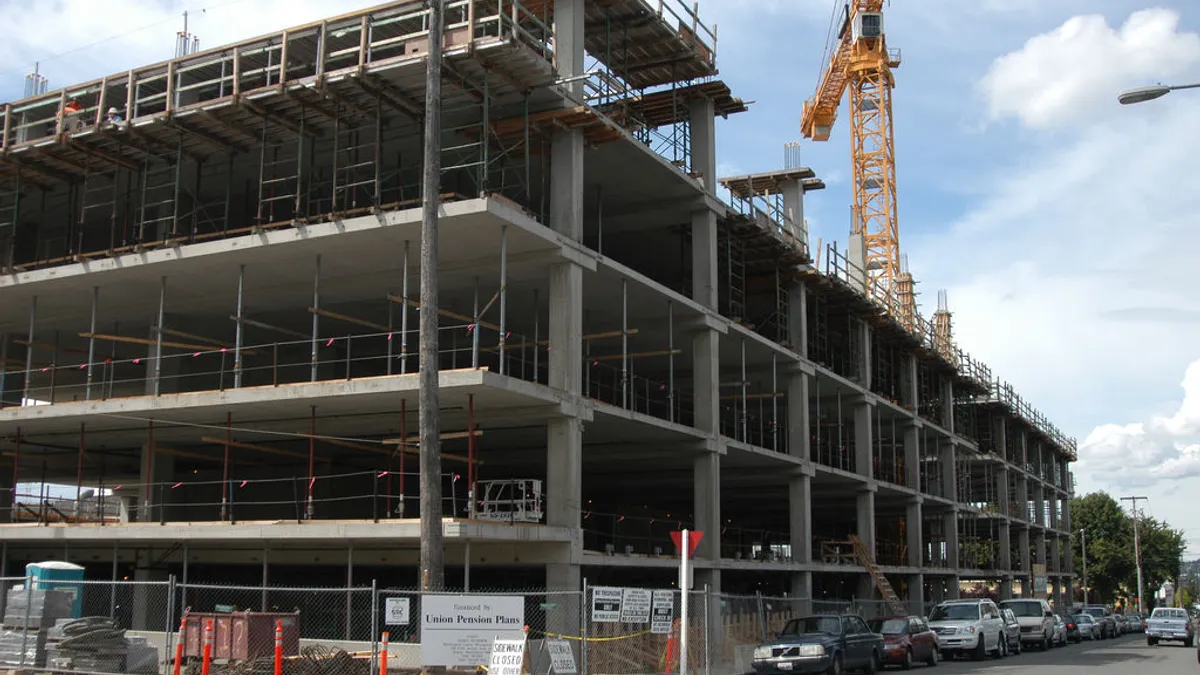Dive Brief:
-
The Urban Land Institute's (ULI's) most recent Real Estate Economic Forecast indicates that the U.S. commercial real estate market is in for steady growth through 2019.
-
The semi-annual survey, according to Curbed, projects commercial transactions to hit $414 billion in 2019, down from 2015's $547 billion but ahead of the 16-year average of $294 billion. The industrial market, driven by e-commerce warehouse and data center construction, will lead other sectors with an anticipated growth rate of 3.7% from 2017 to 2019. The suburban office market has yet to gain traction.
-
The ULI said U.S. real estate markets are "close to equilibrium," which should translate to rent increases and moderate returns for investors.
Dive Insight:
Despite the ULI's findings, Bloomberg recently reported that the suburban office market is on an upward march as older millennials opt to move away from urban centers to smaller, more affordable cities nearby. And employers are tagging along.
One of the contributing factors helping to push millennials to outlying areas is that suburban offices and their accompanying developments increasingly mimic urban layouts. That creates the walkable, social environment that drew younger professionals to the city in the first place.
Somewhat reminiscent of the traditional company towns built around factories or coal mines in the 18th and 19th centuries in the U.S., these "metroburbs," give new suburbanites a modern live-work-play experience, Christian Giordano, president of New York City–based architecture firm Mancini Duffy, told Construction Dive last month.
Companies like Facebook, Google and Verizon are building these kinds of suburban communities in their attempt to draw in tech workers. They, too, are including housing, retail and other convenient features that city residents traditionally enjoy.
Even with built-in customers, however, some businesses that are part of these suburban enclaves find that those features aren't drawing enough foot traffic to keep them in the black. As a result, developers are trying to come up with a formula that will make the retail, restaurants and other commercial establishments in their developments a destination for the general public as well.













